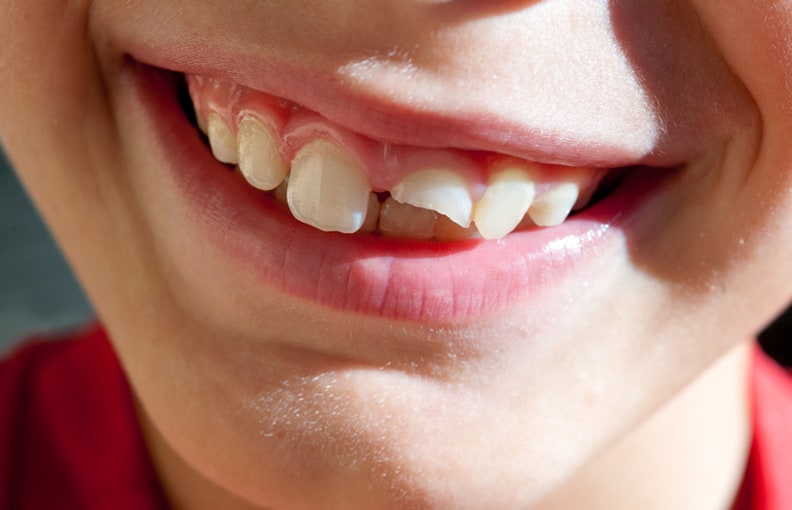Trauma to Your Child’s Tooth, What To Do Next?

It is common for children to have injuries while growing up. It is even more common for the trauma to happen in their mouth or on their teeth. The treatment for the tooth depends on the amount of damage done to the tooth. This week’s post we will go over different types of trauma and what to do when it happens.
Fractures from Trauma

Fractures are the most common problems that kids have after a trauma to the teeth. The fractures can be small where a simple composite resin, known as tooth-colored filling, can cover the area. If the fracture is small enough this can be the permanent option. These tooth-colored fillings may need to be redone in the future though as your child’s teeth color and shape change with age and time.
The fracture can expose the pulp of the tooth, leading to a need for more complex treatment. The pulp of the tooth is the layer of the tooth that holds its blood vessels and the nerves. If the pulp is exposed to the bacteria in your child’s mouth it can become infected and may need a root canal and crown to save the tooth. Even if the pulp isn’t exposed just the trauma itself can do enough damage to the pulp where a root canal will still be needed.
Knocked-Out of Position
If your child has an injury and you notice the tooth is no longer in alignment with the rest of the teeth call your dentist immediately. They can move it back into position and often times the ligaments that hold your tooth in place can reattach to the tooth. A root canal may be needed so your child may be sent to an endodontic specialist to evaluate the tooth’s vitality.
After your dentist places the tooth back into the position he or she may need to splint the teeth together. They will anchor the displaced tooth to the teeth next to it to give the tooth stability while the ligaments and bone reattach.
A Tooth that is Completely Out

When your child has a severe blow to the face sometimes the tooth can completely come out of the mouth.
Baby Teeth
If the tooth is a baby tooth do not try to place it back in. These teeth are not replaced since the adult tooth is typically underneath. It is important to still make an appointment with your dentist. If the tooth is out prematurely, a space maintainer may be necessary to keep room for the permanent tooth to come in.
Permanent Teeth
If it is a permanent tooth do not throw away it away! Most of the time these teeth can be saved with a little TLC. Gently rinse any dirt or debris off the tooth with water or milk. Do not scrape or scrub it since there are still the periodontal ligaments attached to it. These fibers are important in aiding the tooth to integrate back into the mouth. After the debris is rinsed off gently place it back in the socket as soon as possible and call your dentist to make an appointment. When placing the tooth back in, handle it only by the crown of the tooth, not the root. The crown of the tooth is the top of the tooth that is usually visible in the mouth. The root is the bottom layer of the tooth that isn’t visible and is usually under the bone.
Don’t be forceful when trying to place the tooth back in the socket. If the tooth does not easily go back in, place it in one of the following: saline solution (saltwater), milk or saliva. Water is not a great option. If there is no milk or saline solution available and the child is old enough not to accidentally swallow the tooth, they may hold it in their check if the dentist’s office is a short distance away. You may also wrap it in a wet napkin to ensure it stays moist. Do not use a dry napkin.
If your dentist can place the tooth back into its socket within an hour there is a good chance for survival. They will still assess the need for a root canal or splint.
Trauma Take Home Points
- Wear a mouthguard when playing sports to minimize the risk of damage to teeth.
- Correct your child’s bite with orthodontics. It has been shown that kids that have protruding teeth that are flared out are more likely to have damage to their teeth.
- Call your dentist as soon as any trauma occurs to your child’s tooth. Seeing a dentist as soon as possible will give you the best chance of saving your child’s teeth.
- Place ice packs in the area of the trauma to help reduce pain and swelling.
- If your dentist cannot see you immediately and the chip is small, place orthodontic wax or sugar-free gum in the area to cover up any sharp edges.
- Try to get your child to avoid forming habits of chewing on hard substances like ice, hard candies and pencils.
Accidents happen but follow these tips to help make sure your child has the best chance to keep their teeth! Ask us how Dr. D can make a custom sports mouth guard for your child to help prevent some of these injuries!



